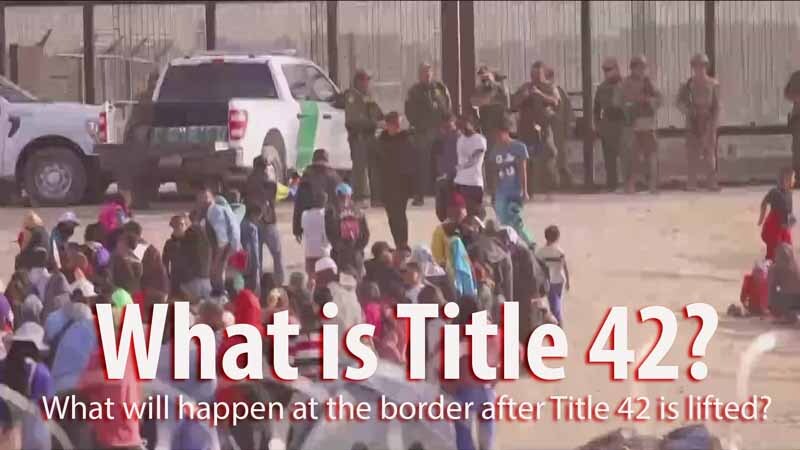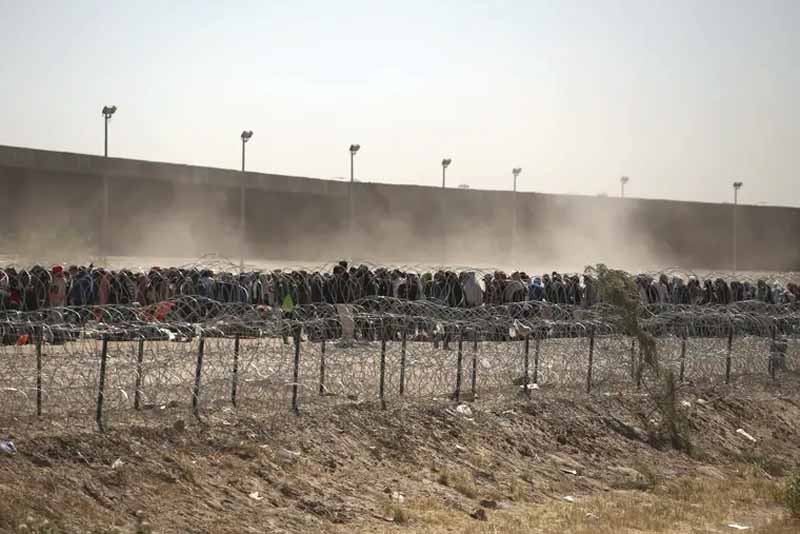 News Staff
News Staff![]() -
May 11, 2023 -
Politics -
US Border Control
Title 42
-
3.4K views -
0 Comments -
0 Likes -
0 Reviews
-
May 11, 2023 -
Politics -
US Border Control
Title 42
-
3.4K views -
0 Comments -
0 Likes -
0 Reviews

DLNews by JTFMax:
Cities across the country are bracing for a spike in migrants as the end of Title 42 draws near. The policy was invoked during the Covid-19 pandemic to expel migrants quickly without giving them the opportunity for a credible fear interview or asylum application.
However, not all migrants were affected by the policy, including children traveling alone. As a result, the procedure is to be lifted on May 11.

What is Title 42?
Title 42 is a long-standing public health law that gives the federal government the power to remove migrants in times of emergency. For example, in March 2020, during the COVID-19 pandemic, the Trump administration used this law to promptly remove migrants from countries with high rates of new virus cases.
The government policy permits removing migrant children who come into the country without accompanying adults. The Bipartisan Policy Center reports that around 2.8 million migrants have been expelled under Title 42 since its introduction. Although Democrats in Congress and advocates are requesting the policy's repeal, the White House has declined.
Several Republicans, including those representing districts that voted for the president, are pushing to maintain Title 42. They introduced a bill before the recent recess to prevent the White House from lifting the law without a comprehensive strategy to manage a potential surge of migrants. Axios was the first to report on this development.
What will happen at the border after Title 42 is lifted?
Officials are preparing for a potential increase in migrants after the expiration of Title 42. The administration is mobilizing significant resources to handle a possible surge of asylum seekers. However, whether the increase will be substantial or long-lasting is still being determined. Migration has risen due to a combination of factors, including global events, economic disparities, cartels' increased smuggling operations, and a lack of action from Congress, all exacerbated by the COVID-19 pandemic.
The end of Title 42 could mean more migrants are released into the United States, particularly those not eligible for expedited removal (mostly single adults). But that increase will likely be tempered by a backlog of hundreds of thousands of cases that immigration courts have been processing for years. The end of Title 42 will also keep the process for unaccompanied minors, who continue to be housed in federal shelters and allowed to remain in the country while their cases are reviewed.
What will happen in border communities?
Migrants who try to cross the border into the United States flee violence, authoritarian governments, and extreme poverty. Yet, every day, thousands journey across an overextended border system. They risk their lives to escape danger, often hoping to find asylum.
Since March 2020, immigration officials have used a law called Title 42 to expel migrants trying to enter the country illegally quickly. Unfortunately, the Trump administration misinterpreted the law, leading to migrants being removed within hours of apprehension without a chance to request asylum.
Officials expect that when Title 42 expires on May 11, migrant apprehensions will increase. But that increase will likely be less dramatic than in the past.
What will happen in cities across the country?
Each day, numerous migrants take on the perilous journey to enter the United States. These individuals are fleeing from violence, oppressive governments, and dire poverty, hoping to start anew. Starting Thursday, they will have one less challenge to face: the pandemic-era policy referred to as Title 42 has come to an end.
When President Trump invoked the rule at the outset of the coronavirus pandemic, he gave border officials the authority to expel migrants more quickly without considering their asylum requests. The move fueled outrage among rights groups, while Republican governors like Texas Gov. Greg Abbott and Florida's Ron DeSantis used it to make political points, busing migrant families to Democratic cities.
Although Title 42 exists, it is seldom implemented due to the expense of deporting individuals from the US by air. Instead, the US relies on Mexico to accept deported migrants. Even after Title 42 is no longer in effect, this reliance on Mexico will continue. However, with more migrants into the US, the system is expected to face increased strain.

At Desert Local News, connections are everything. We're not just another social networking platform—we're a lively hub where people from all walks of life come together to share stories, spark ideas, and grow together. Here, creativity flourishes, communities grow stronger, and conversations spark global awareness.